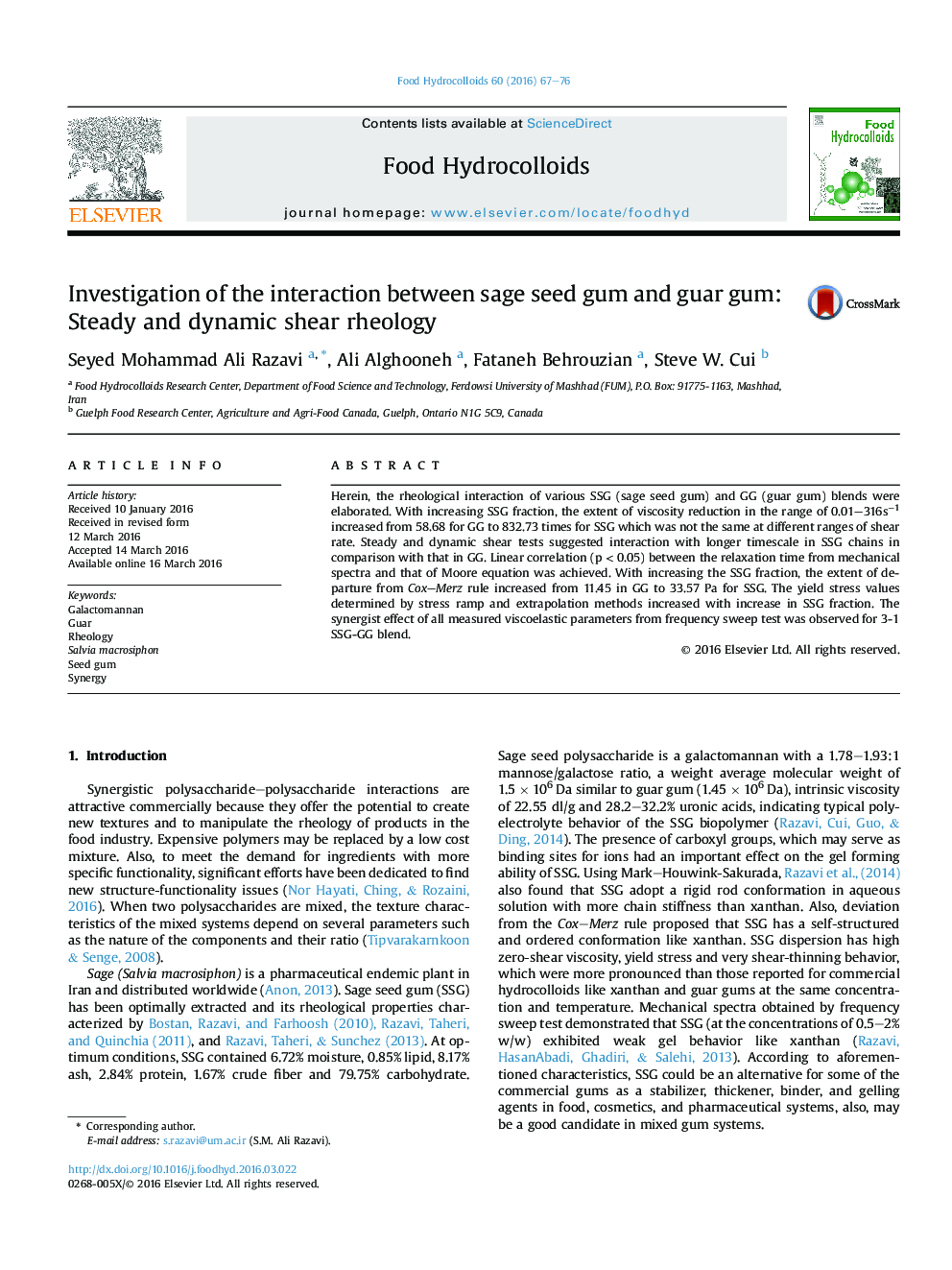| کد مقاله | کد نشریه | سال انتشار | مقاله انگلیسی | نسخه تمام متن |
|---|---|---|---|---|
| 603556 | 1454417 | 2016 | 10 صفحه PDF | دانلود رایگان |
• The interaction of SSG (sage seed gum) and GG (guar gum) blends were elaborated.
• The rheological tests suggested longer timescale of interaction in SSG than in GG.
• Relaxation time from mechanical spectra and Moore equation showed high correlation.
• The extent of departure from Cox–Merz rule increased with increasing SSG fraction.
• The best synergist interaction was observed for 3-1 SSG-GG among other gum ratios.
Herein, the rheological interaction of various SSG (sage seed gum) and GG (guar gum) blends were elaborated. With increasing SSG fraction, the extent of viscosity reduction in the range of 0.01–316s−1 increased from 58.68 for GG to 832.73 times for SSG which was not the same at different ranges of shear rate. Steady and dynamic shear tests suggested interaction with longer timescale in SSG chains in comparison with that in GG. Linear correlation (p < 0.05) between the relaxation time from mechanical spectra and that of Moore equation was achieved. With increasing the SSG fraction, the extent of departure from Cox–Merz rule increased from 11.45 in GG to 33.57 Pa for SSG. The yield stress values determined by stress ramp and extrapolation methods increased with increase in SSG fraction. The synergist effect of all measured viscoelastic parameters from frequency sweep test was observed for 3-1 SSG-GG blend.
The correlation between the characteristic relaxation time found in oscillatory experiment (λi), the Moore relaxation time (τ) and the sage seed gum-guar gum (SSG-GG) ratios (1%w/w, 20 °C).Figure optionsDownload as PowerPoint slide
Journal: Food Hydrocolloids - Volume 60, October 2016, Pages 67–76
